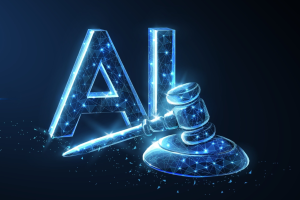How AI is Transforming Legal Practice and its Ethical Implications
Artificial intelligence is ushering in a profound transformation in the legal profession, affecting everything from research to ethics and career development. Aníbal Sabater, partner at Chaffetz Lindsey LLP in New York and president of the Commission on the Future of the Lawyer at the UIA, offers a clear-eyed view of what lies ahead.
Sabater sees three immediate disruptions: document review, contract drafting, and legal research. “First, I would expect document review and discovery processes to become largely automated, with AI systems analyzing datasets faster and more precisely than lawyers could,” he explained. “Second, AI is likely to impact contract drafting, especially in the case of routine transactions.” As for legal research, “AI is already revolutionizing legal research with systems that can synthesize case law, statutes, and regulations instantaneously, dramatically reducing the time spent on foundational research tasks.”
He is more cautious about predictive analytics, noting, “I am less sure whether and if so how fast AI predictive analytics will enable lawyers to forecast transaction risks or disputes outcomes with greater accuracy. If they do, contract negotiation and dispute settlement strategies will be altered significantly.”
The lawyer’s role will shift in response to automation. “It is almost certain that the lawyer will be less of an information processor and more of a strategic advisor and problem-solver.” He expects senior lawyers to focus on complex judgment calls and relationship management, while junior lawyers will act as “AI managers, from whom firms and clients expect the ability to spot AI errors and understand the limitations of automated systems.”
This transition introduces serious ethical responsibilities. “The most salient challenge is ensuring human oversight and ultimate responsibility for the work product,” Sabater warned. “AI needs to remain a tool that assists in the practice of law, but does not replace the lawyer or human judgement.” He added that “the duty of competence, for instance, requires lawyers to understand the AI tools they use, including their limitations, potential biases, and error rates.” He pointed to “well-publicized cases in which lawyers were sanctioned for submitting in court outputs from AI tools that were sheer ‘hallucinations.’”
On confidentiality, Sabater cautioned that “lawyers need to select tools that prevent the dissemination of sensitive client information.” Transparency with clients is also vital: “Clients need to understand what tasks are becoming automated and what tasks remain to be performed by the lawyer directly.”
AI also affects how lawyers are trained. “Traditionally, lawyers grew in seniority as they learnt to master document review and contractual analysis,” he noted. With AI replacing some of this work, “career progression paths may become less predictable as firms need fewer junior associates for routine work but require more sophisticated technical skills.”
Professional organizations must step up. “This puts the onus on bar associations and professional organizations like the UIA to ensure that the legal profession responds appropriately to the AI transformation,” he said. He believes the UIA can set standards, promote education, and bridge global gaps in legal AI adoption.






